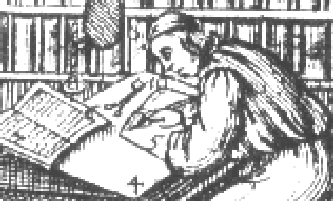
 |
Text Encoding Initiative |
The XML Version of the TEI GuidelinesAppendix D Colophon |
Up: Contents Previous: Appendix C Prefatory Notes
|
Introductory Note (March 2002) 2 A Gentle Introduction to XML 3 Structure of the TEI Document Type Definition 4 Languages and Character Sets 6 Elements Available in All TEI Documents 14 Linking, Segmentation, and Alignment 17 Certainty and Responsibility 18 Transcription of Primary Sources 21 Graphs, Networks, and Trees 22 Tables, Formulae, and Graphics 29 Modifying and Customizing the TEI DTD 32 Algorithm for Recognizing Canonical References 38 Sample Tag Set Documentation 39 Formal Grammar for the TEI-Interchange-Format Subset of SGML |
The text of this manual was prepared electronically on a variety of systems. Most sections were originally drafted by members of the work groups and working committees of the TEI; all have been revised by the editors to achieve greater uniformity of style and greater consistency in the tag set. SGML tags from a preliminary version of the tag set documented here were introduced in the text by the original drafters of the sections or by the editors, using standard text editors on VMS, VM/CMS, PC-DOS, and Apple Macintosh systems. The resulting SGML document fragments were validated using VM2 (a markup validator distributed with the public-domain ARCSGML materials), sgmls (a parser built on the same engine), Markit, Checkmark, XGML Validator, and/or Author/Editor. The validated files, which contained both the prose description of the tag set and the reference materials, were then processed with ad hoc programs written in Spitbol to produce separate SGML documents for the prose, the reference section, and the DTDs; these SGML documents were then further translated by simple programs in Rexx and Spitbol into either LaTeX or Waterloo GML for formatting and printing. In 2001–2002 the text of these guidelines was converted to The Gnu Emacs editor, with the PSGML package, was the mainstay of editing from then on. The resulting document was processed with XSLT specifications to produce the DTD files, the HTML reference guide, and the PDF version. James Clark's nsgmls SGML/XML validator, Richard Tobin's rxp XML validator, Michael Kay's Saxon XSLT implementation, The camera ready copy of the 1992–1996 versions of this document was produced by Waterloo Script GML, version 89.1, running on the IBM 3090 at the University of Illinois at Chicago Academic Computer Center (to which thanks), and using a set of macros extending the GML Starter Set of tags with specialized tags designed for this document. Later interim versions were produced by a translation to LaTeX. The P4 release of the Guidelines was typeset by transforming the TEI XML source to an XML file containing XSL Formatting Objects, which was then formatted using the PassiveTeX implementation of XSLFO by David Carlisle and Sebastian Rahtz. The underling engine was the pdfTeX extension of TeX by Han The Thanh. The current printed version is typeset in Times Roman, with Computer Modern Sans-serif and Lucida-Sans Typewriter as needed. This formatted version of the Guidelines was created on 2002-04-20T18:05:17-01:00. |
Up: Contents Previous: Appendix C Prefatory Notes
edited by C M Sperberg-McQueen and Lou Burnard.
Copyright TEI Consortium 2002